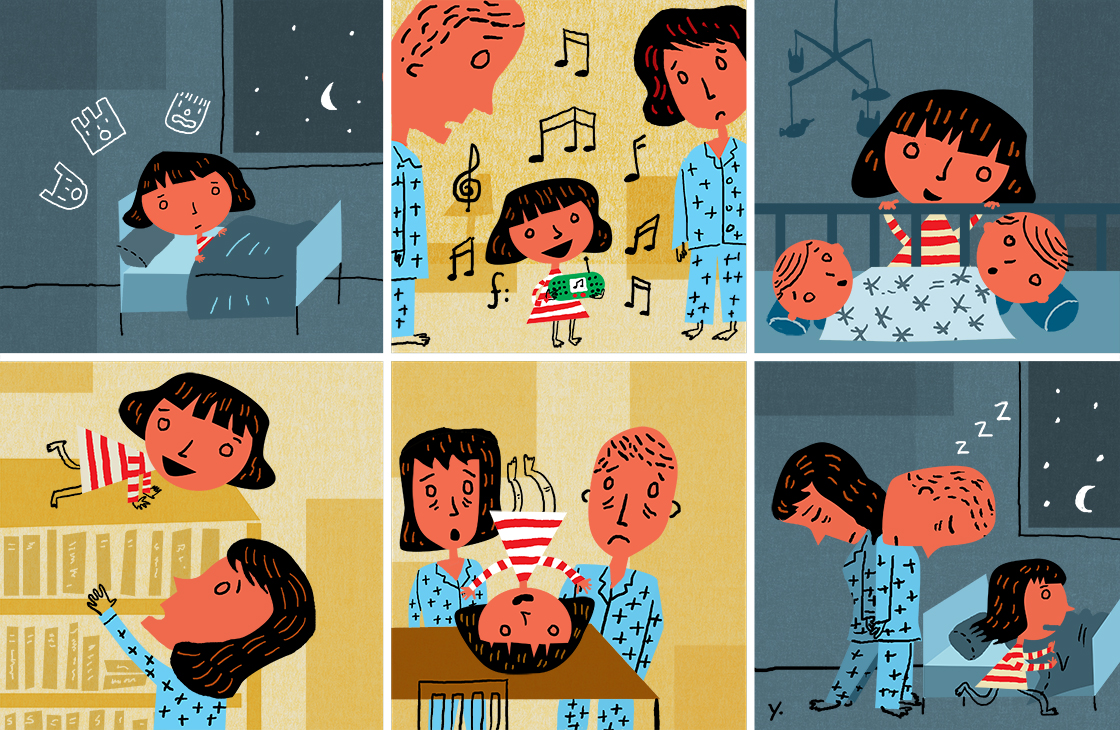THIS ARTICLE IS MORE THAN FIVE YEARS OLD
This article is more than five years old. Autism research — and science in general — is constantly evolving, so older articles may contain information or theories that have been reevaluated since their original publication date.
Erin, a 14-year-old girl with autism, stayed awake talking, singing and playing acrobat — but not sleeping — for about four years. Her mother, Joellyn Boggess, says Erin’s antics resembled nothing short of a circus that debuted in 2006, when Erin was 3, and continued till she was almost 8. (Erin has twin siblings who were babies when this started and didn’t necessarily sleep through the racket.)
“Erin did not want to miss out on anything by falling asleep,” Boggess says. “She would walk around her room; we’d find her in the closet, in the twins’ room, talking with them. Once, she somehow climbed up on this shelf that was almost as tall as the ceiling.”
As part of her performance, Erin would stand on her head, turn on music and sing along. She would creep into her parents’ room and stand silently by their bed. “We’d be sound asleep, and all of a sudden, we’d wake up, almost like you could feel someone near you,” Boggess recalls.
At these moments, Boggess would lead her daughter back to bed. “I would turn out the lights. I would lie down with her. I would rub her back,” she says, “and I’d be falling asleep at the same time.” Even when her daughter did finally drop off, it often did not last. Erin was a light sleeper and awoke easily.

The lack of sleep was a strain on the whole family. “It was just awful back then, because the twins didn’t sleep, and she wouldn’t sleep. I had to try to stay sane during the day with them and not scream and yell — she had so much energy; she was just wild.”
Eventually, the family found solutions. Erin’s parents introduced regular bedtimes and rituals. They gave Erin pictures of all the bedtime activities: brushing teeth, listening to a story, putting away electronic screens, getting into bed and turning off the lights. They discovered that baths are stimulating for Erin, so they moved bathtime to the morning.
They themselves prefer to go with the flow, so sticking to a bedtime routine did not feel natural to them, but their efforts paid off. A change in medication also helped. “We ended up getting her on different kinds of medicine,” says Boggess, “but we felt like we were drugging our kid, and she was on an adult dose; it was crazy.”
Boggess says she laughed when a neurologist suggested melatonin, but she tried it with Erin. And it worked. These days, Erin is still full of energy. But mostly during the day.

By joining the discussion, you agree to our privacy policy.